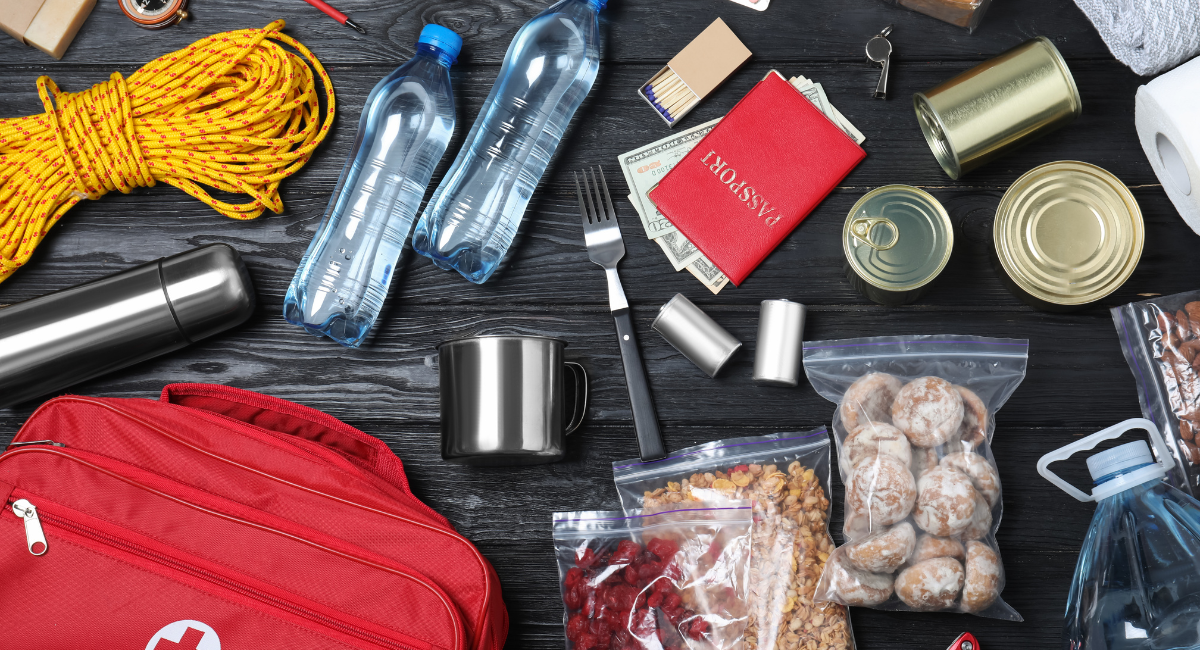Women are among the leading groups primed for disaster preparation, according to the California Office of Emergency Services (CalOES).
As a result, CalOES is launching Listas, a first-of-its-kind campaign to empower women with emergency resilience knowledge in the face of disasters ranging from extreme heat to winter storms to wildfires.
At a Thursday, April 4 briefing hosted by Ethnic Media Services and California Black Media, a CalOES leader, a state assemblymember and a mother of two who works as a teacher discussed the Listas campaign and how it can empower women as resilience leaders in ethnic communities.
Preparing women for emergencies
The campaign, launched in March during Women’s History Month, builds off of research that identified two key groups of women who would most benefit from disaster preparation resources: “the head of the household and the messenger,” said Diana Crofts-Pelayo, Assistant Director of Crisis Communication & Public Affairs at CalOES.
“These heads are women who bear the weight of responsibility making ends meet while taking care of children or elderly parents, while the messengers are first- or second-generation women helping support their families within the unit,” she explained. “We saw that women over the age of 18, mostly in Latino, AAPI and black communities, are the ones that would listen to our message, pass it on and actually use it during an emergency.”
CalOES is providing Californians with videos and actionable disaster safety tips, as well as local county emergency alert signups, through over 73 community organization outreach grantees.
These organizations have worked alongside a larger statewide partnership network to make over 400,000 calls to California women since March asking them to sign up for alerts and sharing preparedness information.
Local phone, text and email alerts in multiple languages for disasters like flooding, earthquakes and wildfires are available for Californians in each county through listoscalifornia.org/alerts.
Women across communities
“My grandma never learned English. My mom was born in Mexico, and she was always seen as the leader within our family here and back in Mexico,” said Crofts-Pelayo. “Women are the ones that push their families to do things. It’s not necessarily the man of the household anymore. At the end of the day, they’re the ones that are most likely to be looking after elderly parents, or engaging with their community through schools and local associations.”
“What we want is for women to have that knowledge and talk about it with their partners, family, friends and children,” she continued. “Emergencies are not fun; it’s not if but when the next one happens. The more that a family can talk about it, the more you demystify responding to it.”
“The most important thing we saw in our research is that people need to see an emergency to truly believe it,” Crofts-Pelayo added. “We got anecdotes from people that said ‘I might not evacuate my home until I see the water rising on my street corner,’ or ‘unless I see the flames down the street.’ There are still many communities that have never experienced a natural disaster, and our aim is showing people that this is real, this happens every day … All disasters are local, which is why community-based preparedness is so important.”
“It’s the women who are taking care of parents, grandparents, children, doing the shopping, taking care of the house, preparing for tomorrow,” said District 10 Assemblymember Stephanie Nguyen. “For emergency situations, it’s key that women not only hear these messages but deliver them.”
“When disaster comes, it affects everybody across communities, and seeing different women talk from their cultures about having go-bags ready, batteries charged, water for washing and drinking — women across communities can think, ‘If she’s doing this, I should be doing this in my home as well,’” she added.
A teacher’s perspective
“Thinking about the safety and wellbeing of my family and students, knowing that I have the knowledge and the tools to protect them, is always a top priority for me, and thinking about emergency preparedness goes hand in hand with that,” said Shayla Happi Amenra-Warmsley, a Sacramento-based mother of two and second grade teacher.
“I’ve started implementing these tools both in my personal family and within my classroom — from creating emergency kits, to developing family communication plans and emergency contact systems, this campaign definitely helped bring many ‘what-ifs’ into the practical reality of what I would do in the case of an earthquake, fire, flood, or a power outage, which did happen to my home a month ago,” she continued, adding that Listas enabled her to respond to it.
“In times of crisis, it’s easy to feel overwhelmed and helpless, especially for young people,” Amenra-Warmsley said. “Having a plan just as important as practicing it, so a lot of what I do at home and with my students alongside teaching the tools we need to be prepared — like shelter-in-place plans, memorizing emergency phone contacts, planning evacuation routes and having snack bags — is teaching the tools we need for mental resilience, whether that’s morning yoga or emotional regulation exercises.”
“There are changing elements to what it means to be prepared, it means being both flexible and adaptable in the face of adversity,” she added. “As a teacher, I not only educate my students academically but also teach them lifelong skills of resiliency, emerging from any storm as a stronger version of themselves. Learning how to prepare for emergencies is at the heart of that.”




